So, do you think you've tried every coffee variation out there? Your go-to espresso or latte might be comforting, but why not explore new horizons? Coffee cultures worldwide offer various unique recipes that can bring fresh excitement to your daily brew.
This guide takes you through ten distinctive coffee recipes from different cultures, each with its own story and flavor profile. By discovering these international delights, you can refresh your love for coffee and add a new twist to your routine.
Read on explore and maybe try one of these global coffee creations. These recipes are sure to bring a delightful change to your coffee experience.
Turkish Coffee
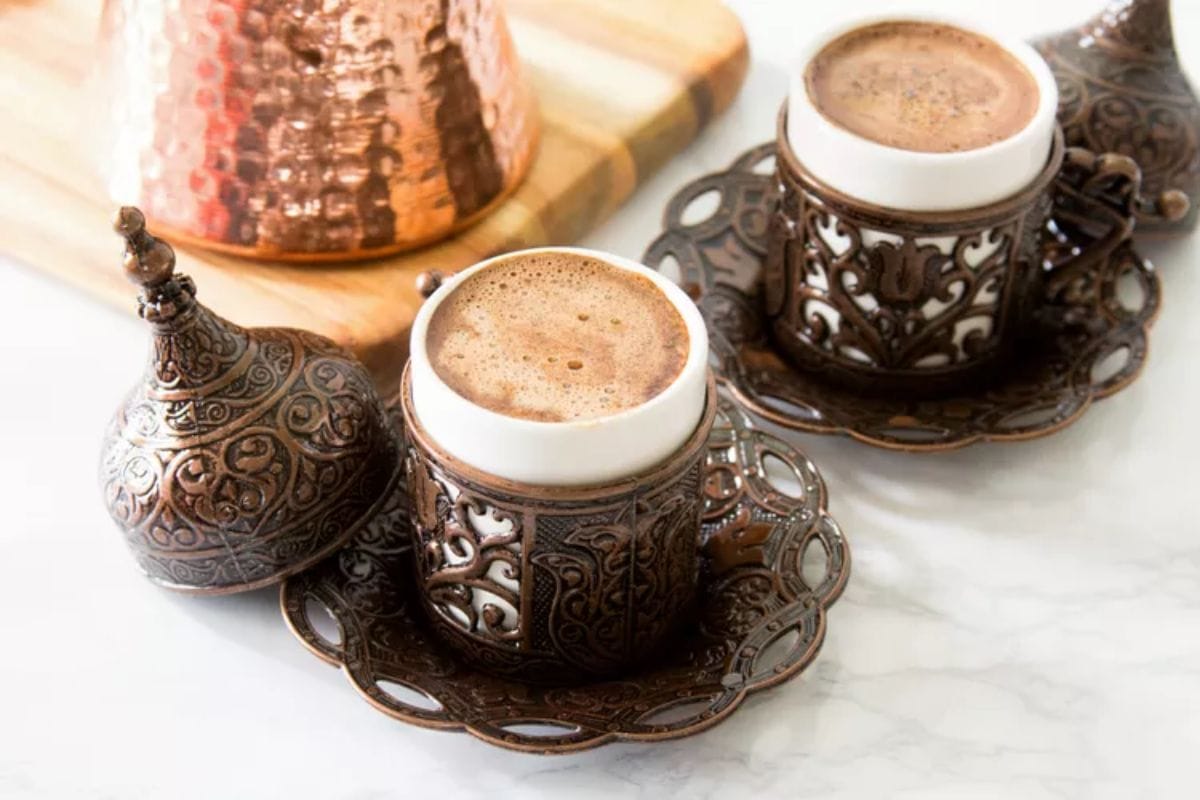
Turkish coffee is a time-honored tradition in the Middle East and the Balkans, known for its rich and thick texture. Brewed using a special copper pot called a cezve, this coffee is made with finely ground beans and can be sweetened to taste. The brewing process is an art form that requires patience, as it focuses on creating a velvety foam on top of the coffee.
Served in small cups, Turkish coffee is often enjoyed slowly, accompanied by a glass of cold water and sometimes a sweet treat like Turkish delight. Here’s a simple recipe to help you craft this distinctive coffee at home.
Recipe
Ingredients:
- 5 to 6 ounces cold water
- 2 tablespoons extra finely ground coffee (e.g., Kurukahveci Mehmet Efendi Turkish coffee)
- 1 to 3 teaspoons sugar (optional)
Instructions:
- Pour the cold water into the cezve. Add the finely ground coffee and sugar (if using). Stir gently to dissolve the coffee and sugar. Avoid stirring after this point.
- Place the cezve on medium heat. Watch as the coffee begins to rise and foam.
- Just before the coffee starts to boil, remove the cezve from the heat. Skim off the foam and place a little into each serving cup. Return the cezve to the heat and let it foam up again.
- Pour the coffee slowly into the serving cups, ensuring the foam rises to the top.
- Let the coffee settle for a few minutes before serving.
Tips:
- Use dark-roasted Arabica coffee for the traditional flavor. Pre-ground Turkish coffee is ideal for achieving the correct fine grind.
- Aim for a thick foam without boiling the coffee, as boiling can lead to a bitter taste.
- Brew in small batches to maintain the quality of the coffee.
Variations:
- Adjust the amount of coffee and sugar to suit your taste preferences.
- For a richer flavor, substitute milk for water and be careful not to scald it.
- Add a whole green cardamom pod or a pinch of ground cardamom for a hint of spice.
Café Cubano

Café Cubano, also known as Cuban coffee, is a bold and sweet espresso-style coffee that’s a staple in Cuban culture. This rich, dark coffee is known for its intense flavor and unique sweetness, achieved by mixing a small amount of sugar with the espresso during brewing. Often enjoyed as a small, strong shot, Café Cubano is a beloved beverage that offers a quick caffeine fix with a touch of Cuban flair. Here's how to make this vibrant coffee at home.
Recipe
Ingredients:
- 1 cup water
- 2 tablespoons finely ground espresso coffee (e.g., Cuban espresso coffee)
- 2 tablespoons sugar (adjust to taste)
Instructions:
- Fill your espresso maker’s water reservoir with 1 cup of water. Place the finely ground coffee into the espresso filter basket.
- Assemble the espresso maker and place it on the stove over medium heat. Brew the espresso until it starts to come out of the spout.
- As the coffee brews, quickly pour a small amount (about 1-2 tablespoons) of the first few drops of espresso into a separate cup. Add the sugar to this small amount and whisk vigorously to create a creamy, frothy mixture.
- Once the espresso brewing is complete, slowly pour the remaining coffee into the cup with the sugar mixture, stirring gently to combine.
- Pour the Café Cubano into small espresso cups and serve immediately.
Tips:
- Use a dark roast espresso coffee for an authentic Cuban flavor.
- The key to Café Cubano is the frothy, sweet espuma (foam) created by whisking the sugar with the initial espresso drops.
- Adjust the amount of sugar based on your preference for sweetness.
Variations:
- For a stronger flavor, add an extra shot of espresso.
- Experiment with adding a dash of cinnamon for a spicy twist.
Vietnamese Egg Coffee

Vietnamese Egg Coffee, or Cà Phê Trứng, is a unique and creamy coffee drink that combines rich espresso with a velvety egg-based froth. Originating from Hanoi, this indulgent beverage offers a delightful balance of sweet, coffee, and egg flavors. The creamy, mousse-like topping is made from whipped egg yolks and condensed milk, creating a luxurious coffee experience. Here’s how to make this traditional Vietnamese treat at home.
Recipe
Ingredients:
- 1/2 cup strong brewed Vietnamese coffee (or espresso)
- 1 egg yolk
- 2 tablespoons sweetened condensed milk
- 1 tablespoon granulated sugar (optional, for extra sweetness)
- A pinch of cocoa powder or ground cinnamon (for garnish)
Instructions:
- Prepare your Vietnamese coffee using a drip filter or espresso machine. Brew a strong cup of coffee and set aside.
- In a mixing bowl, combine the egg yolk, sweetened condensed milk, and granulated sugar (if using). Use a hand mixer or whisk to beat the mixture until it becomes light, fluffy, and frothy. This should take about 3-5 minutes.
- Pour the hot brewed coffee into a serving cup.
- Gently spoon the whipped egg mixture on top of the coffee. The froth should float on top of the coffee, creating a distinct layer.
- Dust with a pinch of cocoa powder or ground cinnamon for extra flavor. Serve immediately and enjoy the layered texture and rich taste.
Tips:
- Ensure the egg yolk is fresh for the best texture and flavor.
- Use a strong coffee or espresso for a robust flavor that complements the sweet, creamy topping.
- For a less sweet version, reduce the amount of condensed milk or sugar.
Variations:
- Substitute the sweetened condensed milk with regular milk and a touch of sugar for a lighter version.
- Experiment with different flavorings such as vanilla extract or almond essence in the egg froth.
Italian Affogato
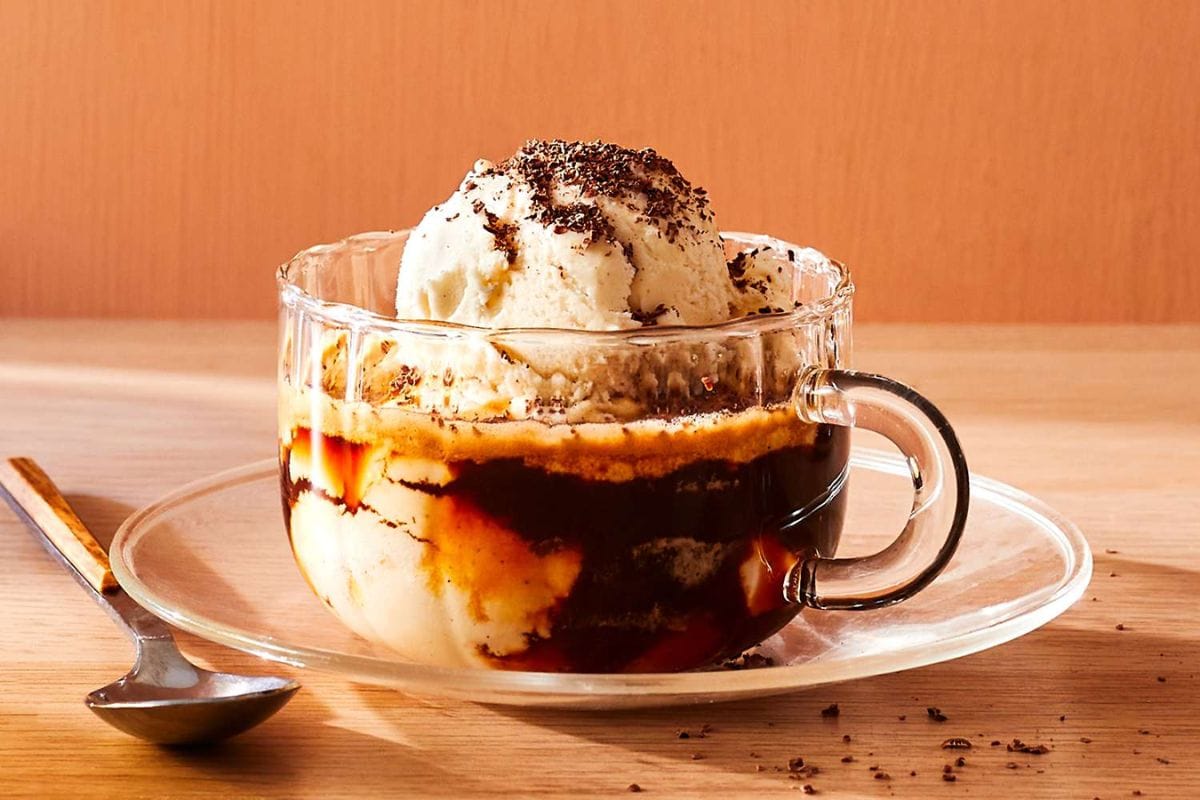
A delightful and simple dessert that combines the richness of espresso with the creaminess of vanilla ice cream. This classic Italian treat, whose name means "drowned" in Italian, features a scoop of ice cream "drowned" in a shot of hot espresso, creating a perfect harmony of temperatures and flavors. Here’s how you can make this indulgent dessert at home.
Recipe
Ingredients:
- 1 scoop vanilla ice cream (or gelato)
- 1 shot (1 ounce) of hot espresso
- Optional: shaved chocolate, a drizzle of caramel or chocolate sauce, or a sprinkle of cocoa powder for garnish
Instructions:
- Brew a shot of espresso using an espresso machine. The espresso should be hot and freshly brewed to contrast with the cold ice cream.
- Place a scoop of vanilla ice cream or gelato into a serving glass or bowl.
- Pour the hot espresso directly over the scoop of ice cream. The espresso should be poured quickly to ensure it remains hot and melts the ice cream slightly.
- If desired, garnish with shaved chocolate, a drizzle of caramel or chocolate sauce, or a sprinkle of cocoa powder. Serve immediately with a spoon and enjoy.
Tips:
- Use high-quality vanilla ice cream or gelato for the best flavor and creaminess.
- Brew the espresso just before serving to ensure it’s hot and aromatic.
- Experiment with different ice cream flavors or add a splash of liqueur for an adult twist.
Variations:
- Substitute the vanilla ice cream with flavors like chocolate, coffee, or hazelnut for a different taste experience.
- For a more decadent treat, add a shot of flavored syrup or a sprinkle of nuts to the ice cream before adding the espresso.
Ethiopian Buna

A traditional coffee preparation deeply rooted in Ethiopian culture, known for its rich, aromatic flavor and ceremonial significance. This method of brewing coffee involves roasting green coffee beans and preparing the coffee in a special pot called a jebena. The process is often a communal activity, emphasizing the social and cultural aspects of coffee drinking in Ethiopia.
Recipe
Ingredients:
- 1 cup green coffee beans
- 4 cups water
- Optional: sugar, spices like cardamom, or a pinch of salt
Instructions:
- Heat a dry skillet or pan over medium heat.
- Add the green coffee beans to the pan and roast them, stirring frequently, until they turn a dark brown color and release a rich aroma. This usually takes about 10-15 minutes.
- Allow the roasted beans to cool slightly before grinding.
- Grind the roasted coffee beans to a medium-fine consistency. You can use a coffee grinder or mortar and pestle for this step.
- Fill a jebena (or a traditional coffee pot) with 4 cups of water and place it on the stove or heat source.
- Add 4 tablespoons of the ground coffee to the jebena.
- Bring the water to a boil, then reduce the heat and let it simmer for about 10 minutes. The coffee should froth up and develop a rich, dark color.
- Pour the brewed coffee into small cups, leaving the grounds behind in the jebena.
- Optionally, add sugar, spices like cardamom, or a pinch of salt to taste.
Serve the Ethiopian Buna in small cups and enjoy it with traditional Ethiopian snacks or sweets.
Tips:
- The quality of the coffee beans and the roasting process greatly affect the flavor, so use high-quality beans and roast them carefully.
- The brewing process should be watched closely to avoid over-boiling, which can make the coffee bitter.
- For an authentic experience, serve the coffee with a side of traditional Ethiopian bread or snacks.
Variations:
- You can add spices such as cardamom, cloves, or cinnamon to the coffee grounds before brewing for extra flavor.
- To adjust the strength of the coffee, vary the amount of ground coffee used or the brewing time.
Mexican Café de Olla
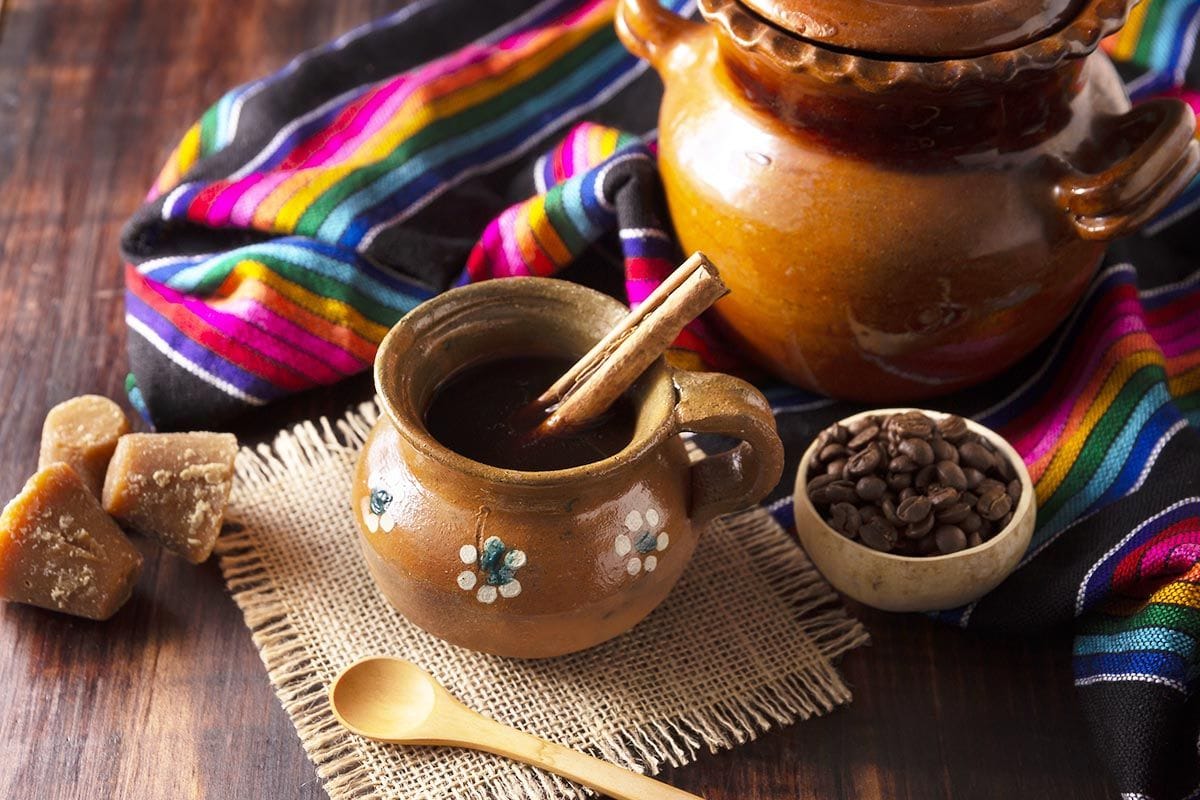
Hailing from the heart of the Mexican countryside, this brew is made in a clay pot known as an olla, which imparts a distinct earthy nuance to the coffee. Infused with spices such as cinnamon and piloncillo (unrefined cane sugar), Café de Olla offers a comforting and warmly spiced experience, making it an ideal choice for sharing with loved ones or savoring during quiet moments.
Recipe
Ingredients:
- 6 cups water
- 1 cup coarsely ground coffee (preferably Mexican coffee)
- 1 cinnamon stick
- 1/2 cup piloncillo (or brown sugar as a substitute)
- Optional: 2-3 cloves, 1 star anise
Instructions:
- In a large pot (preferably a clay olla if available), bring 6 cups of water to a boil over medium heat.
- Add the cinnamon stick, piloncillo, and any optional spices (cloves, star anise) to the boiling water.
- Stir until the piloncillo or brown sugar has completely dissolved.
- Add 1 cup of coarsely ground coffee to the pot.
- Reduce the heat and let the coffee simmer for about 10 minutes. Do not boil vigorously; a gentle simmer allows the flavors to meld without making the coffee bitter.
- Remove the pot from heat. Use a fine mesh strainer or a coffee filter to strain the coffee into a separate serving pot or directly into cups.
- Serve hot.
Mexican Café de Olla is typically enjoyed black, but you can add a splash of milk or cream if desired. It pairs wonderfully with traditional Mexican pastries or bread.
Tips:
- For a richer flavor, use freshly ground coffee and adjust the amount according to your taste preference.
- The traditional clay pot imparts a distinct flavor, but a regular pot will work if you don't have one.
- Adjust the sweetness and spiciness by varying the amount of piloncillo and spices.
Variations:
- Experiment with additional spices such as nutmeg or allspice for a unique twist.
- Try adding a splash of vanilla extract for a different flavor profile.
Swedish Kaffeost
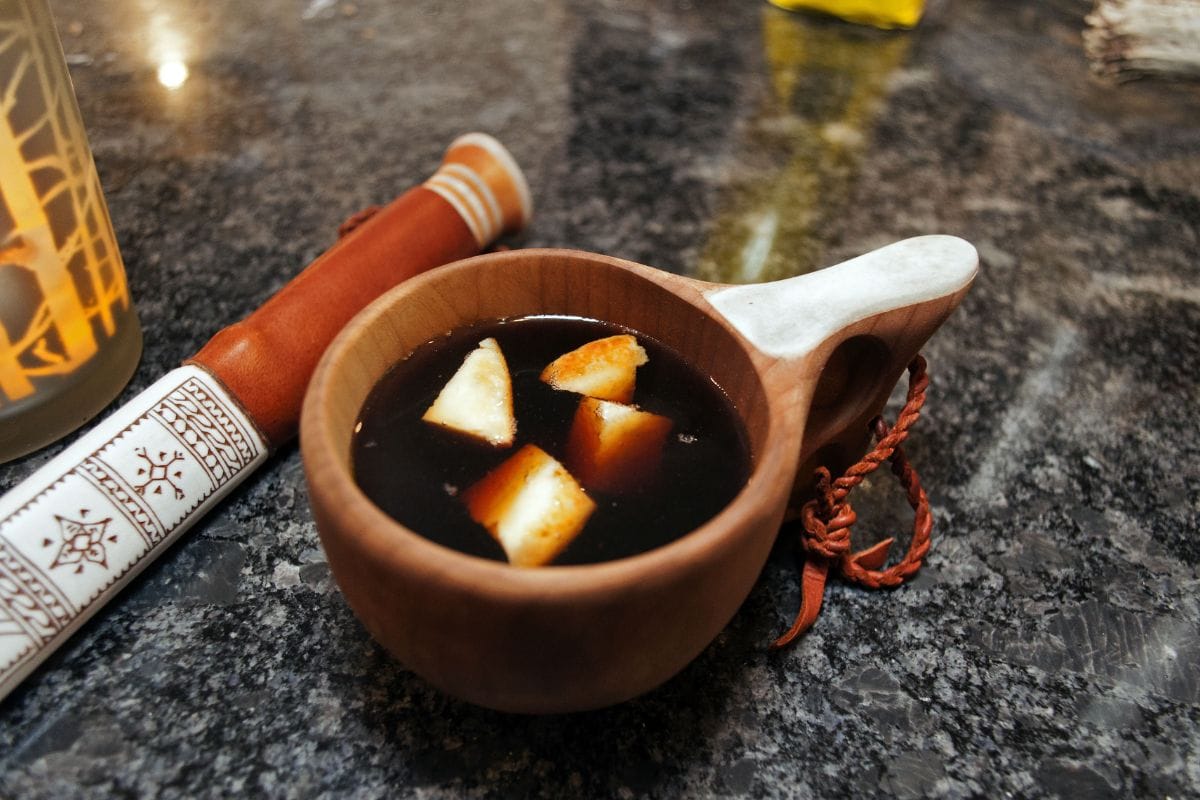
Known for its delightful combination of coffee and cheese, Kaffeost involves pouring hot coffee over chunks of a special cheese called "kaffeost" (coffee cheese). This cheese, traditionally made from reindeer or cow’s milk, has a mild, slightly tangy flavor and a chewy texture that complements the coffee beautifully.
The cheese slowly melts and infuses the coffee with its rich, savory notes, creating a truly memorable and comforting experience. This practice is especially popular in Sweden’s northern regions, where it’s enjoyed as a hearty and warming treat during long, cold winters.
Recipe
Ingredients:
- 4 cups strong brewed coffee
- 1 cup Kaffeost cheese (or a mild, firm cheese like white cheddar or gouda if Kaffeost is unavailable)
- Sugar (optional)
- Cream (optional)
Instructions:
- Brew a strong pot of coffee using your preferred method. Swedish Kaffeost is traditionally enjoyed with very strong coffee, so make sure to brew it robustly.
- Cut the Kaffeost cheese into small cubes. If Kaffeost is not available, substitute with a mild, firm cheese like white cheddar or gouda.
- Place the cheese cubes into your coffee cup or mug. Pour the hot, strong coffee over the cheese. Allow the cheese to soften slightly but not dissolve completely.
- If desired, add a bit of sugar or cream to the coffee to suit your taste. Stir gently to combine.
Tips:
- Use a strong coffee blend to balance the richness of the cheese.
- Kaffeost traditionally pairs with a mildly tangy cheese. If using a substitute, choose a cheese that complements the coffee well.
- Enjoy this drink slowly to fully experience the interaction of flavors between the coffee and the cheese.
Variations:
- Experiment with different types of cheese to find your preferred combination.
- For a sweeter taste, add a touch of flavored syrup or a sprinkle of cinnamon on top.
Japanese Kyoto-style Cold Brew
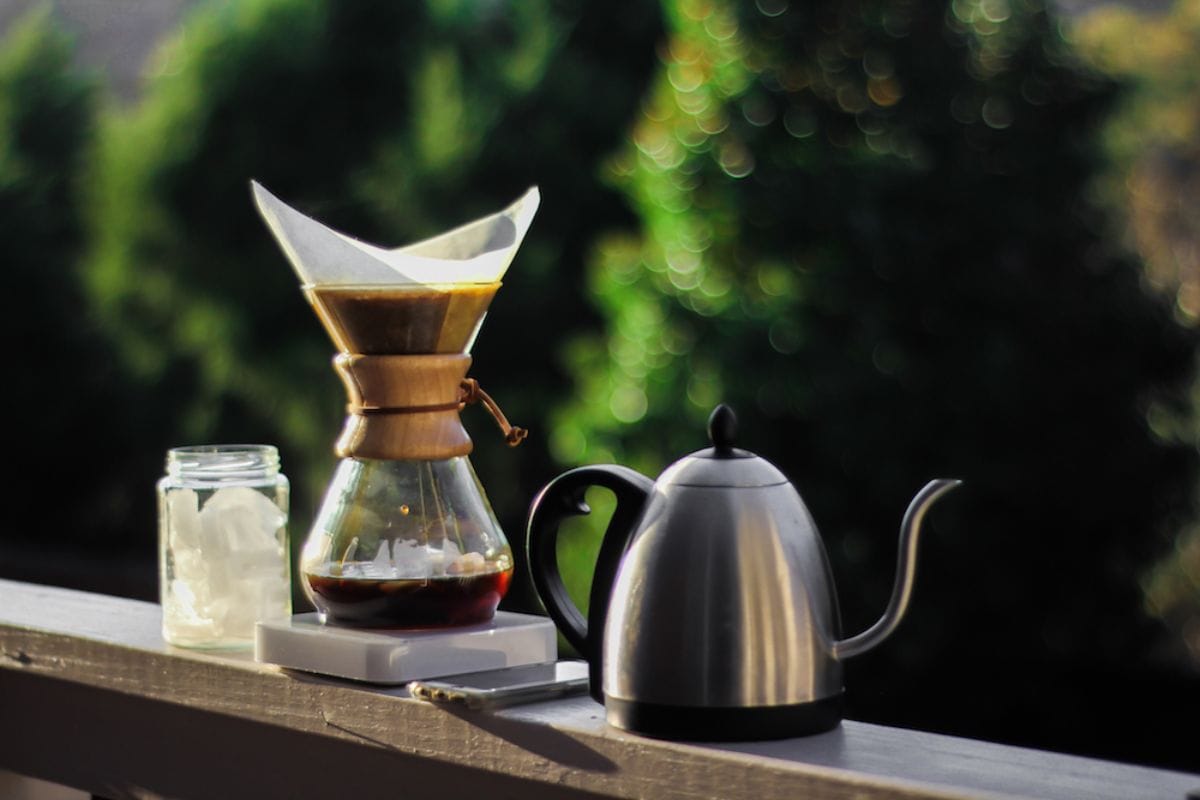
Japanese Kyoto-style Cold Brew is a refined and elegant method of brewing coffee that produces a smooth, rich, and aromatic cup. This style of cold brew is known for its meticulous and slow extraction process, which allows the coffee to develop a deep, nuanced flavor profile. Originating from Kyoto, Japan, the process involves dripping cold water through coffee grounds over an extended period, typically 8 to 12 hours. The result is a coffee that is less acidic and has a complex, clean taste, perfect for sipping over ice.
Recipe
Ingredients:
- 1 cup coarsely ground coffee (preferably medium to dark roast)
- 4 cups cold, filtered water
Equipment:
- Cold brew dripper or a large jar with a fine mesh strainer and cheesecloth
Instructions:
- Coarsely grind 1 cup of coffee beans. The grind should be similar to sea salt, which helps in the slow extraction process.
- If using a cold brew dripper, set it up according to the manufacturer’s instructions. Place the coffee grounds in the filter or basket.
- Slowly pour 4 cups of cold, filtered water over the coffee grounds. Ensure that all grounds are saturated evenly.
- Allow the coffee to drip through the grounds slowly. This process can take anywhere from 8 to 12 hours, depending on your dripper and desired strength. If using a jar, cover and let the coffee steep in the refrigerator for 12 to 24 hours.
- If using a jar, strain the coffee through a fine mesh strainer lined with cheesecloth to remove all coffee grounds. For a dripper, simply remove the coffee grounds and discard.
- Serve the cold brew over ice for a refreshing drink. You can dilute it with water or milk to your taste preference.
Japanese Kyoto-style Cold Brew is ideal for those who appreciate a smooth, refined coffee experience. It pairs beautifully with light desserts or can be enjoyed on its own to savor its complex flavors.
Tips:
- Use high-quality coffee beans for the best results.
- Adjust the coffee-to-water ratio to suit your taste; more coffee will yield a stronger brew.
- Store the cold brew concentrate in the refrigerator for up to two weeks.
Variations:
- Experiment with different coffee beans to find your preferred flavor profile.
- Add a splash of flavored syrups or a hint of vanilla for a unique twist on this classic brew.
Brazilian Caipirinha Coffee
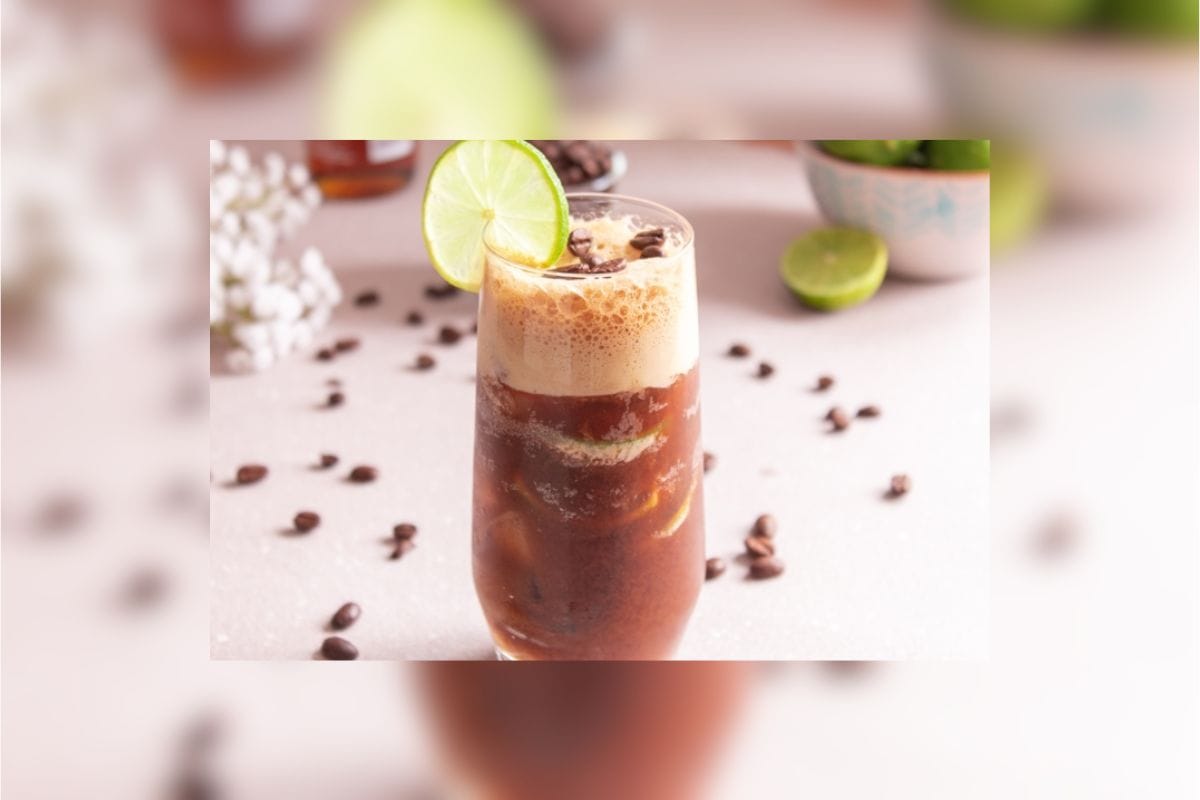
Brazilian Caipirinha Coffee combines the bold flavors of coffee with the refreshing zest of a classic Caipirinha cocktail. This innovative drink is a delightful twist on traditional coffee, incorporating the distinct tang of cachaça, a Brazilian sugarcane spirit, and the citrusy freshness of lime. The result is a rich, invigorating coffee experience that offers both a caffeine kick and a unique cocktail flair.
Recipe
Ingredients:
- 1 cup freshly brewed strong coffee (hot or cold)
- 1 lime, cut into wedges
- 2 tablespoons sugar (or to taste)
- 2 ounces cachaça (Brazilian sugarcane spirit)
- Ice cubes
Instructions:
- In a glass, muddle the lime wedges with the sugar. Use a muddler or the back of a spoon to crush the lime and sugar together, releasing the lime juice and dissolving the sugar.
- Pour 2 ounces of cachaça over the muddled lime and sugar mixture. Stir to combine.
- Pour 1 cup of freshly brewed strong coffee into the glass with the lime and cachaça mixture. If using cold coffee, add ice cubes to chill the drink. If using hot coffee, let the mixture cool slightly before adding ice.
- Stir the mixture well to combine all the ingredients. Adjust the sweetness and lime to your taste preference if needed.
- Garnish with a lime wedge or a sprig of mint if desired. Serve immediately.
Tips:
- Use a strong coffee to balance the flavors of the cachaça and lime.
- Adjust the amount of sugar to suit your taste preference; you can also use a sugar substitute if desired.
- If cachaça is not available, you can use rum as an alternative.
Variations:
- Experiment with different fruits, such as strawberries or oranges, for a fruity twist on the classic Caipirinha Coffee.
- Try using flavored syrups or liqueurs to add an extra layer of complexity to your drink.
As we wrap up this global coffee tour, it’s clear that coffee is not just a morning routine, it is an adventure in a cup! From the rich depths of Turkish coffee to the zesty kick of Brazilian Caipirinha Coffee, each recipe is a passport to a new flavor experience. So, why stick to the usual when you can explore the world one sip at a time? Grab your favorite mug, brew up something extraordinary, and let your taste buds travel!
Also Read:




`










